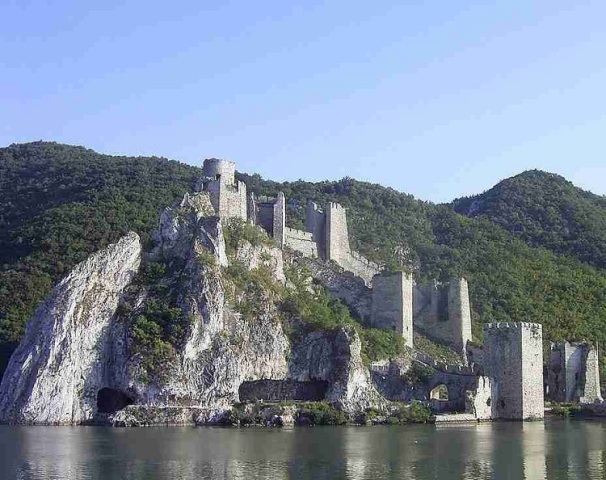Serbia is a landlocked country situated in Europe. Browse through this article and to find out some interesting and fun facts about Serbia.
Facts About Serbia
Serbia is a landlocked country, situated in the Central and Southeastern Europe. It is enclosed by Hungary in the north; Romania and Bulgaria in the east and south; and Croatia, Bosnia and Herzegovina and Montenegro in the west. Created by the cultural boundaries of the East and the West, the powerful medieval kingdom was occupied by the Balkans in much of their existence earlier. It was in the 16th century, when Serbian state collapsed and was torn by domestic feuds, that Ottoman, Hungarian and later, Austrian incursions took Read on and find out about some interesting and fun facts about this east-west combination of the country.

Image: Denis Barthel [GFDL (http://www.gnu.org/copyleft/fdl.html), CC-BY-SA-3.0 (http://creativecommons.org/licenses/by-sa/3.0/), CC-BY-SA-1.0 (http://creativecommons.org/licenses/by-sa/1.0) or CC-BY-SA-2.5 (http://creativecommons.org/licenses/by-sa/2.5)], via Wikimedia Commons
Fun and Interesting Facts about Serbia
- The official name of Serbia is the Republic of Serbia.
- The official language of Serbia is Serbian. While the other recognized languages spoken are Hungarian, Slovak, Romanian, Croatian, Rusyn and Albanian.
- Majority of people in Serbia are Serbian.
- The main religion in Serbia is Christian Orthodox, but there are also other religious communities, namely Islamic, Roman Catholic, Protestant, Jewish and others.
- The currency of Serbia is Serbian Dinar (RSD).
- The capital of Serbia is Belgrade.
- Beograd (Belgrade) is one of the oldest cities in Europe, first settled in the 3rd century BC by the Celts, before becoming the Roman settlement of Singidunum.
- Serbia follows the system of Parliamentary Democracies.
- Serbia gained independence on November 25, 1918.
- The Republic of Serbia was formed on June 6, 2006.
- Belgrade won the title of ‘City of the Future’ for Southern Europe, in a contest sponsored by The Economist/FDI Magazine.
- Serbia is the largest raspberry exporter, accounting for one third of all the raspberries in the world. Close to 95 percent of the world’s top quality raspberries come from Serbia.
- Serbia is the only country outside of CIS to have a free-trade agreement with Russia.
- As per UNHCR, Serbia has the highest number of refugees and internally displaced persons in Europe, a total of approximately 314,000.
- The University of Belgrade was awarded the "Diskobolos 2007" award by the Council of European Professional Informatics Societies.
- The Roman Emperor, Constantine the Great, was born in Nis, Serbia, in 274 AD.
- The Miroslav Gospel, written in the twelfth century, is the oldest preserved Serbian manuscript.
- The Constitutional Charter of Serbia took effect on 4th February 2003.
- Silver lake, also called Serbian sea, is the largest lake in Serbia. It is very popular for being one of the clearest and the cleanest lakes in the country
- Kalemegdan is the most popular park in Belgrade because of the park’s numerous winding walking paths, shady benches, picturesque fountains, random statues, mammoth historical architecture and incredible river views.
- The Cathedral of Saint Sava or Hram svetog Save in Belgrade is the largest Orthodox Church currently in use.
- Prince Michael Street is the main walking street in Belgrade, the capital of Serbia. It is a pedestrian zone and shopping center, protected by law as one of the oldest and most valuable landmarks of the city. It has a large number of impressive buildings and mansions, built at the end of 1870s.
See also
More from iloveindia.com
- Home Remedies | Ayurveda | Vastu | Yoga | Feng Shui | Tattoos | Fitness | Garden | Nutrition | Parenting | Bikes | Cars | Baby Care | Indian Weddings | Festivals | Party ideas | Horoscope 2015 | Pets | Finance | Figures of Speech | Hotels in India : Delhi | Hyderabad | Chennai | Mumbai | Kolkata | Bangalore | Ahmedabad | Jaipur
- Contact Us Careers Disclaimer Privacy Policy Advertise With Us Lifestyle Sitemap Copyright iloveindia.com. All Rights Reserved.







